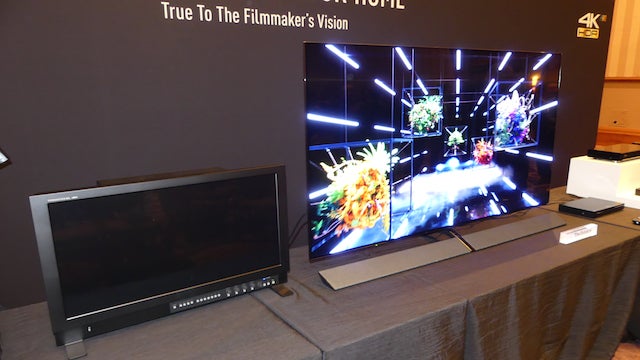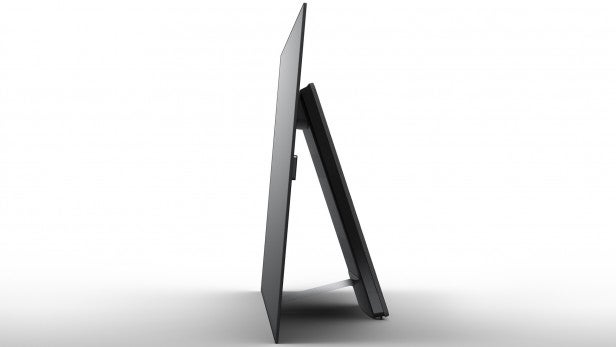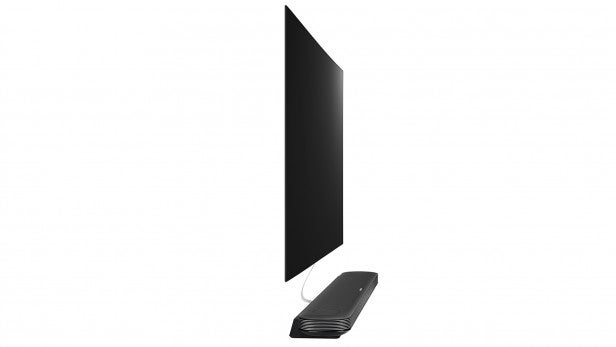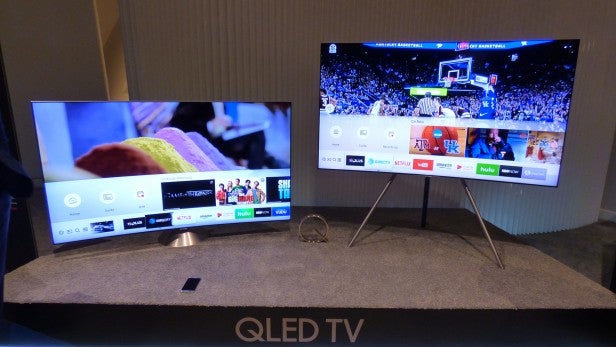TVs are entering a new era in 2017 and 4K is finally worth it – here’s why

Are 4K TVs worth it and should you upgrade? From OLED, QLED and quantum dot to Dolby Vision, HDR 10, and Hybrid Log-Gamma, there’s never been a more exciting – or confusing – time for TV technology. Home Technology Editor Ced Yuen explains why 2017 is the year TVs are truly exciting again and helps you assess your options for buying a new TV.
“Aren’t TVs all the same?”
As a TV reviewer, I’ve been asked that question more often than I can count. While it’s tempting to think that way, the truth is that they’re not all the same – and it’s my job to point out the differences.
Some years, this is easier to achieve than others.
A good format war always helps, like it did three years ago when there was a legitimate arms race between plasma and LCD panels. Sadly, plasma has since gone the way of the dodo and the landscape is now mostly made up of LCDs. Yes, there’s now OLED, but so far it hasn’t taken a massive bite out of LCD’s market share.
Moreover, LCD manufacturers have been really clever over the last few years and many of the technology’s inherent flaws have been addressed – everyone now has their own take on local dimming, differing numbers of lighting zones, distinctive dynamic contrast modes, and so on.
These differences are subtle, though. In fact, in 2016 my job was damn hard because at times they seemed impossible to perceive. Has the state of LCD TVs improved to the point where it’s hit a plateau? And as a result, are all TVs now pretty much the same?
No, of course they’re not – but increasingly, they looked like variations on the same theme.
At least, that’s what I thought heading into 2017.
But I was wrong.
CES 2017: The next big TV wave is set to break
I’ve just come back from my annual pilgrimage to CES in Las Vegas. It’s the world’s biggest tech show, where drones and fast cars – and drones coming out of fast cars – are not unusual sights. This is where you go to see the near future and also, as it happens, where TV manufacturers go to show off their goods for the year ahead.
Having seen 2017’s best TVs on display, I’m encouraged. Actually, I’m excited – excited enough to be penning this in a state of jetlag-induced delirium.
TV formats and technologies come in waves, and I reckon this is the year the new wave stops swelling and breaks for our retinas to ride. Former emerging trends like 4K/Ultra HD and HDR are finally exiting adolescence, while TVs are being designed with not only these standards in mind, but future developments as well.
More than anything else, everyone’s output just looks more interesting this year – not only have manufacturers brought their A-game; they’ve crucially brought new things to the table too. This is the year the TV market sees some proper steps forward, rather than just incremental improvements.
With all that in mind, here are four things you should know if you’re considering upgrading your TV.
Related: CES 2017 highlights

OLEDs aren’t just for oligarchs anymore
Until now, OLED has remained a relatively niche proposition. Backed by a single manufacturer in LG, the high price of OLED TVs meant that most of us could only enjoy them in one place: the shop floor at John Lewis.
This year at CES, OLED made a lot of noise, with three of the ‘big four’ TV manufacturers pushing it at the show. LG still leads the way with 10 OLED models, but now Panasonic and Sony are in on the action, too.
Better still, all three are taking a different approach to the technology, meaning it’s now impossible to say that all OLED TVs are “the same.”
LG tends to push the most innovative, outlandish ideas, and this year the company has outdone itself. Having talked the talk for a while now about how thin it can make OLED screens, LG is finally walking the walk, bringing to market the Signature OLED W7 (pictured below), which is just 2.57mm thick.
As if the stunning design wasn’t enough, there’s a Dolby Atmos sound system thrown in for good measure, plus support for no less than four HDR standards: the three you may be familiar with in HDR 10, Dolby Vision, and HLG (Hybrid Log-Gamma), plus Technicolor’s Advanced HDR.
Opinion: There’s a major problem with HDR – and only one real solution

I was also pleased to see Panasonic confirm its commitment to OLED at CES – and that rumours of Sony joining the party proved true.
For its part, Panasonic released an OLED in 2015, but there were concerns that it was a one-off experiment. Thankfully, a follow-up came in the form of the EZ1000 series.
These models, however, are flat rather than curved like their 2015 predecessors, suggesting that Panasonic is looking for broad appeal rather than honing in on a niche, and it’s also one of the few TVs in the world approved for use in Hollywood colour grading studios. I’ve heard the ‘director’s vision’ line countless times, but Panasonic seems to mean it.
Then there’s the Sony A1 OLED, which is remarkable not only for its lovely OLED picture, but because of its completely bonkers audio approach. This TV – and I’m still getting over it – vibrates its screen to produce sound. It doesn’t have speakers like other TVs, because it is the speaker. I’ve tried it and it totally works. It’s an astonishing development – and quite possibly makes for the most exciting TV I’ve seen in years.
Admittedly, these three examples are going to be costly. We don’t know the prices yet, but no flagship TV is ever cheap.
Looking on the bright side, OLED prices have consistently come down every year, and the fact that LG is now providing its panels to other manufacturers means it can get away with lowering the price of its ‘junior’ OLEDs. If you’re looking for something (comparatively) more affordable, look out for the LG B7 and C7 series in particular – I reckon they’ll be around the same price as some of the lesser high-end LCDs from Samsung.
No, the market isn’t about to be flooded with cheap OLEDs in 2017, but as the tech becomes more common, prices will start to drop and sets will start to live in sitting rooms rather than upmarket department stores.
Related: Best 4K TVs

LCD’s biggest step forward yet
Not on Team OLED? That’s fine, you’re hardly alone – and it’s Samsung you’ll want to pay attention to in 2017.
This year, Samsung‘s new ‘QLED’ class is replacing its SUHD range at the top of the food chain, and that’s good news, because as far as LCD goes, these QLEDs are in a whole other league.
For starters, you can get up to 1,500-2,000 nits of brightness, while the latest OLEDs ‘only’ go up to 800. Yep, Samsung’s going all-in on peak brightness, but more importantly, its latest sets maintain the picture’s saturation when things get bright – Samsung promises to deliver 100% of the DCI-P3 colour space.
I should point out Samsung’s version of QLED is not the self-lighting QLED tech frequently mentioned on TV discussion boards. What you’ll get from Samsung this year is still LCD-based, with the company supercharging its quantum-dot (QD) techology instead of swapping panels altogether.
What it has done is very clever. Samsung has wrapped its QD nanocrystals in a metal alloy, resulting in a big leap in colour and contrast. When I went eyes-on with the Samsung Q9F at CES, I couldn’t quite believe I was looking at an LCD screen.
The new funky nanocrystals can also be lit from different angles, not just from behind, which has allowed Samsung to re-jig its lighting and improve viewing angles – you don’t need to stay anywhere near the centre of the screen to get a good picture.
Contrast levels and viewing angles are issues that have plagued LCD for years. Finally, it looks like there’s a cure.
Watch: QLED vs OLED
Are 4K TVs finally future-proof?
If you bought into the first round of 4K TVs, it’s quite likely you got stung by changing standards. For instance, all 4K TVs must now have the HEVC decoder to do things like work a UHD Netflix stream, which the first models didn’t. It sucks, but the industry has collectively realised it can’t just muddle through any longer.
These days, all new 4K TVs (generally) keep to the same standards, and you’ve got manufacturers scrambling to make their wares future-proof. The next big thing? That would be HLG, or Hybrid-Log Gamma, which we touched on earlier.
Essentially, it’s a standard for broadcasting HDR video, as opposed to streaming it or playing it off a disc. LG, Panasonic and Sony are supporting HLG (the LG W7 has it out of the box, and the Sony A1 OLED will get an HLG firmware update) so when the software comes, the hardware will be ready, which is exactly how it should be.
Related: What is HLG (Hybrid Log-Gamma)?

It’s also good to see Dolby Vision finally gaining some traction. It’s now a legitimate HDR format rival to HDR 10, which was the first standard floated and largely what everyone has used up until now.
But the times, they are a-changin’ – Netflix already supports Dolby Vision, while Warner, Universal and Lionsgate have promised to make it available on future 4K Blu-rays. On the hardware front, LG (and Vizio in the US) have spearheaded Dolby Vision support, but now Sony is jumping on board, too.
Basically, you’re a lot less likely to get burned in 2017. The big-name manufacturers are now gearing up for future TV trends before they happen, rather than simply reacting to them, so laying down a chunk of your savings for a four-figure set is now a far less risky prospect.
Related: Complete guide to Ultra HD Blu-ray
So, should I buy a 4K TV or wait? And is it worth it?
Don’t get me wrong, I’m not encouraging you to rush out and buy a fancy new TV with all the trimmings. I’m merely saying that I’m a lot more enthused by what this year has to offer.
Sure, there’s always going to be something shinier around the corner – there’s never really a ‘perfect’ time to buy anything, be it a TV, smartphone, or pair of socks. OK, maybe it doesn’t matter too much with socks…
However, this year seems like it’s going to be great for TVs – specifically 4K HDR TVs. The hardware and content is there, key recent trends have advanced to the point of mass-market accessibility, and future developments aren’t being taken lightly anymore.
While buying a 4K TV for the sake of it will never be worth it, we’re now at a point where you can most likely find a 4K TV that suits your needs, budget, and will indeed be worth it – not just for the short-term buzz of having a flashier set than your neighbour, but as a mid-to-long-term investment in a higher-quality viewing experience.
Are TVs all the same, you still wonder?
Not in 2017.
Watch: All you need to know about TVs
Is 2017 the year you plan to make the leap to 4K? Tell us why or why not in the comments below.

